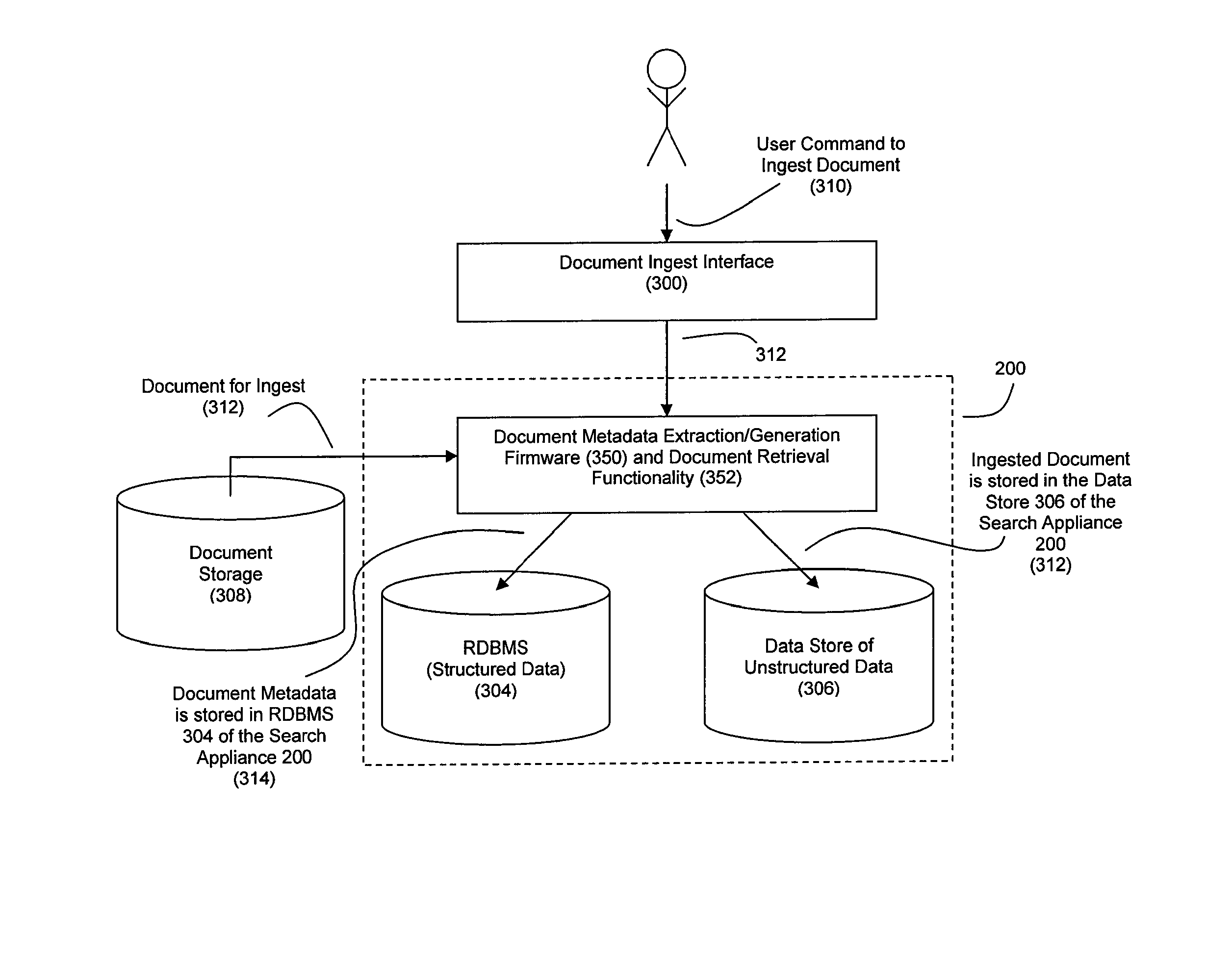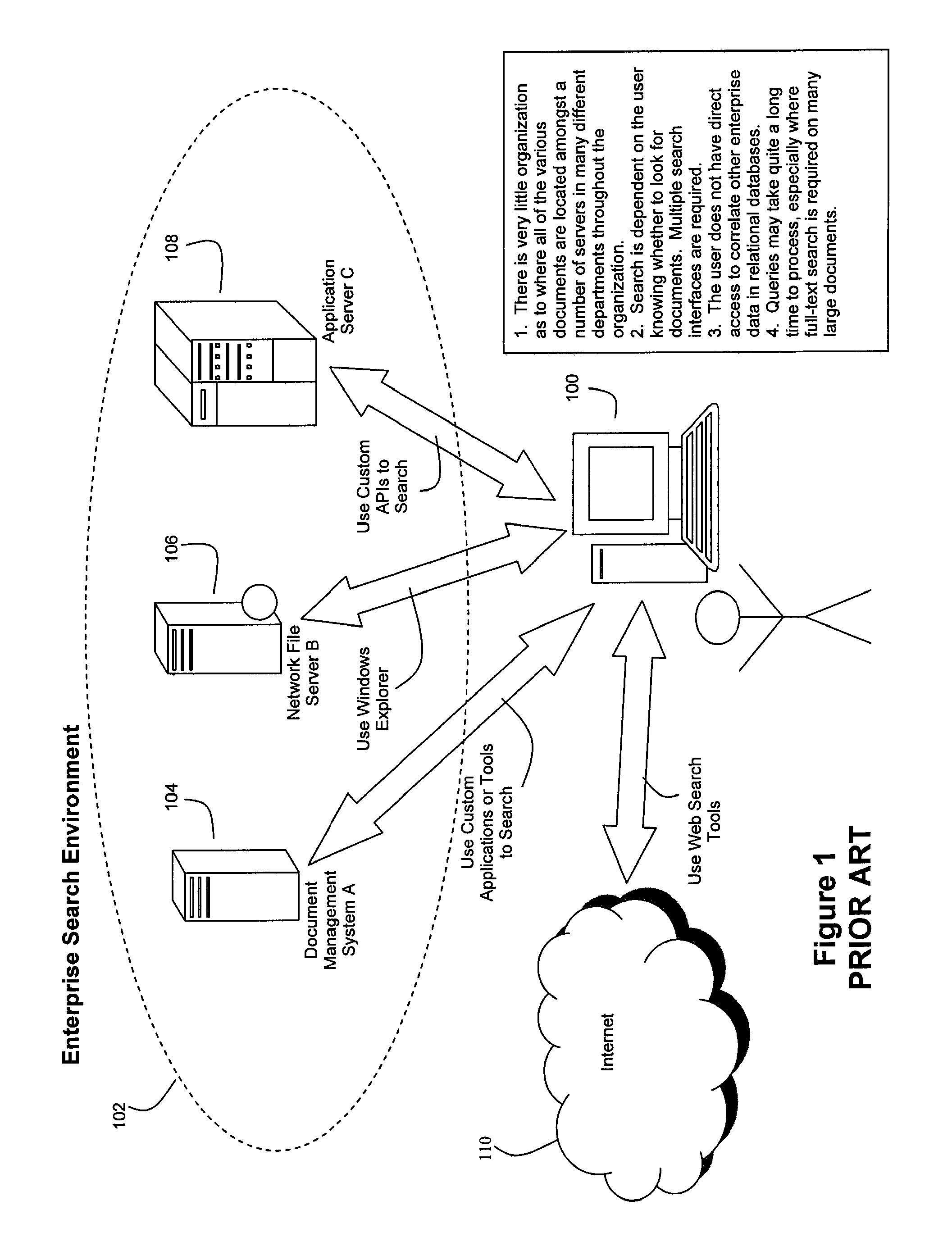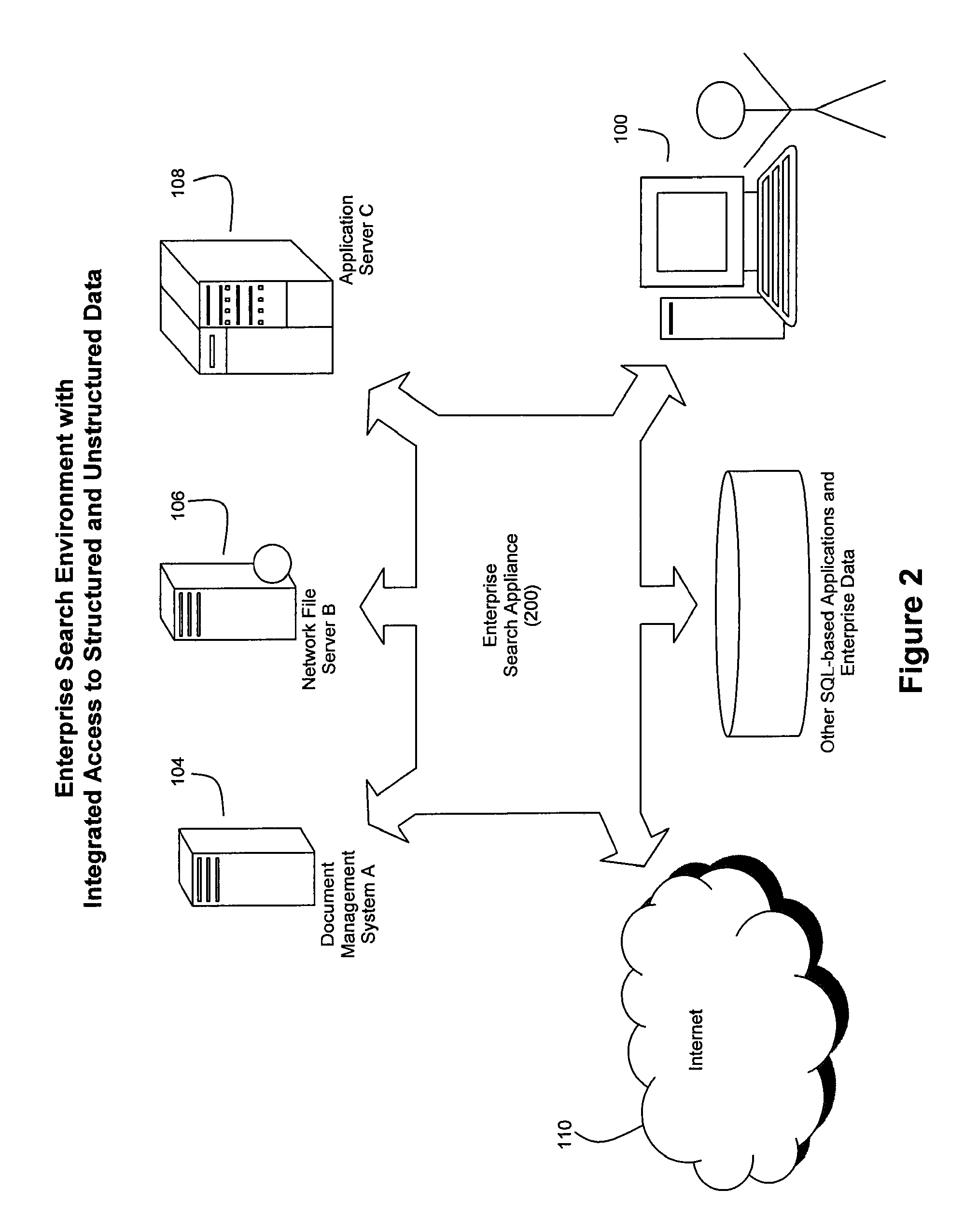Method and system for high performance integration, processing and searching of structured and unstructured data using coprocessors
a coprocessor and structured and unstructured data technology, applied in the field of database acceleration, can solve the problems of unable to directly access and correlate searches, difficult to intelligently and unified access to structured and unstructured data, and many enterprises with serious cases of “information overload”, so as to achieve faster and more unified access
- Summary
- Abstract
- Description
- Claims
- Application Information
AI Technical Summary
Benefits of technology
Problems solved by technology
Method used
Image
Examples
Embodiment Construction
[0055]FIG. 2 depicts an overview of a preferred embodiment of the present invention, wherein an enterprise appliance 200 is configured to provide a user of user computer 100 with intelligent and unified access to structured data (such as that stored by relational database 210) and unstructured data (such as that stored and accessible through components 104, 106 and 108 or through the Internet 110). While an embodiment of appliance 200 can be referred to as a search appliance, it should be noted that data analysis functionalities other than or in addition to searching can be supported by appliance 200, as explained herein.
[0056]Preferably, search appliance 200 employs a hardware-accelerated data processing capability as well as a query handling API for handling queries directed at least partially toward structured data. FIG. 4 depicts a preferred embodiment for the appliance 200. Within appliance 200, a coprocessor 450 is positioned to receive data that streams off either or both a d...
PUM
 Login to View More
Login to View More Abstract
Description
Claims
Application Information
 Login to View More
Login to View More - R&D
- Intellectual Property
- Life Sciences
- Materials
- Tech Scout
- Unparalleled Data Quality
- Higher Quality Content
- 60% Fewer Hallucinations
Browse by: Latest US Patents, China's latest patents, Technical Efficacy Thesaurus, Application Domain, Technology Topic, Popular Technical Reports.
© 2025 PatSnap. All rights reserved.Legal|Privacy policy|Modern Slavery Act Transparency Statement|Sitemap|About US| Contact US: help@patsnap.com



